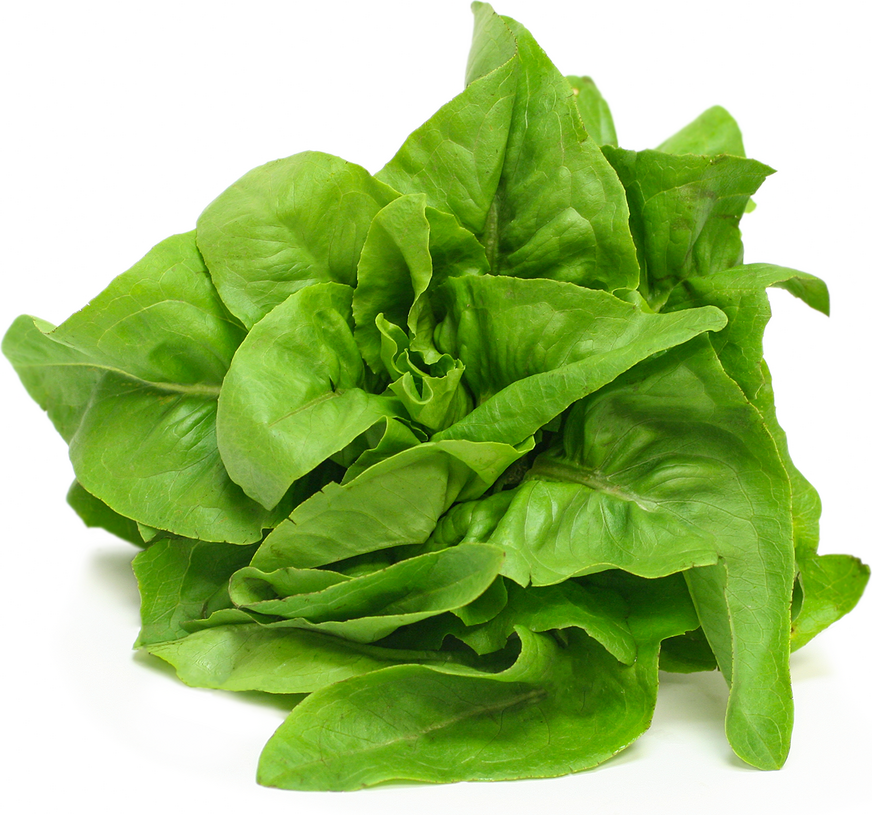


Deer's Tongue Lettuce
Estimated Inventory, ea : 0
Description/Taste
Deer's Tongue lettuce is small to medium in size, averaging 10-15 centimeters in diameter and grows in a loose formation with a connected base. The narrow, pointed, triangular green leaves grow outward and upward wrapping themselves around each other to form a very distinct rosette pattern and have a central, juicy midrib. Though the outer leaves are tender and crisp with a mild, nutty, and sweet flavor, the white inner ribs are crunchy and less palatable, often slightly bitter. Young Deer's Tongue lettuce is milder than its mature counterpart and is often the preferred form for consumption.
Seasons/Availability
Deer's Tongue lettuce is cultivated year-round, with a peak season in early spring.
Current Facts
Deer's Tongue lettuce, botanically classified as Lactuca sativa, is an annual, heirloom variety that is a member of the Asteraceae family. Also known as Matchless lettuce, Deer's Tongue lettuce is a loose-leaf variety that is mainly found in North America in home gardens and on small specialty farms. Favored for its sweet, nutty flavor and tender texture, Deer’s Tongue lettuce is commonly used by chefs in fresh preparations such as a salad.
Nutritional Value
Deer’s Tongue lettuce contains vitamin A, vitamin C, fiber, and some potassium and magnesium.
Applications
Deer's Tongue lettuce is best suited for raw applications as its crunchy texture, and mild flavor is showcased when used fresh and lightly dressed. The leaves can be torn and used in a salad, layered in sandwiches and burgers, or placed as a garnish on meat such as poultry, steak, or fish. It can also be wrapped in fresh spring rolls for additional crunch. Deer’s Tongue lettuce pairs well with meats such as pork belly, lomo, steak, poultry, fish, and bacon, bold and aged cheeses such as Jarlsberg, fruits such as berries, oranges, summer melons, stone fruit, apples, and pears, honey, carrots, bell peppers, cucumbers, basil, mint, and walnuts. The leaves will keep for a couple of days when stored in the crisper drawer of the refrigerator and away from ethene gas producing fruits.
Ethnic/Cultural Info
Deer’s Tongue lettuce is listed on Slow Food’s Ark of Taste, which is a list to help promote and protect at-risk heirloom varieties. Deer’s Tongue lettuce is difficult to transport and is delicate, preventing it from being commercially cultivated on a large scale. Though its geographical growing range has yet to expand globally, this lettuce tolerates many different climates which makes it a favorite for home gardening. Deer’s Tongue lettuce should not be confused with Amish Deer's Tongue lettuce, which was cultivated a century later in the 1840s.
Geography/History
Deer's Tongue lettuce is derived from lettuce that was brought to North America by English settlers around 1740. Predominately found in New England, Deer's Tongue lettuce was a popular lettuce until the rise of new machinery after World War II. Due to its fragile nature, Deer’s Tongue lettuce is not a commercial lettuce and is only found at farmers markets and in home gardens in North America.
Recipe Ideas
Recipes that include Deer's Tongue Lettuce. One




